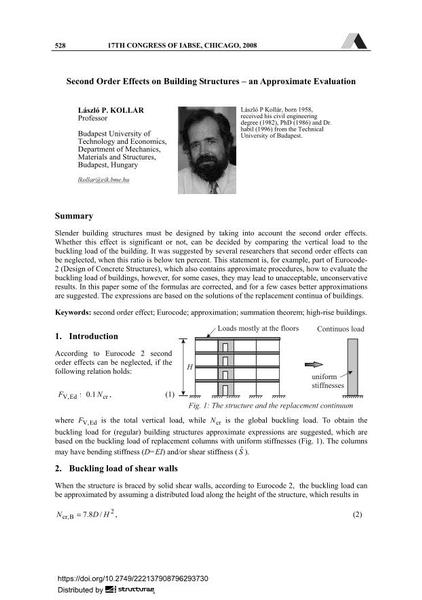|
Abstrait:
|
Slender building structures must be designed by taking into account the second order effects. Whether this effect is significant or not, can be decided by comparing the vertical load to the buckling load of the building. It was suggested by several researchers that second order effects can be neglected, when this ratio is below ten percent. This statement is, for example, part of Eurocode- 2 (Design of Concrete Structures), which also contains approximate procedures, how to evaluate the buckling load of buildings. It is also well known that the second order effect can be taken into account by a fictitious horizontal load, which is a function of the vertical load/buckling load ratio. The key of the evaluation is the proper approximation of the buckling load, which must contain the effect of the stiffnesses of the frames and/or the shear walls, the deformability of the foundations, the effect of the number of stories, etc. Expressions, which takes into account these effects are also given in Eurocode, however, for some cases, they may lead to unacceptable, unconservative results. In this paper some of the formulas are corrected, and for a few cases better approximations are suggested. The expressions are based on the solutions of the replacement continua of buildings.
|

